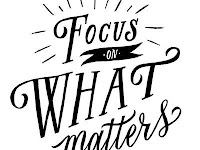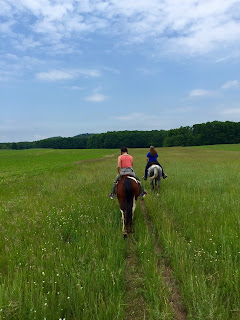Be Intentional
It makes sense. I can see I should be doing these things, but I just don’t have the time. I’m overwhelmed with my day-to-day work. My days are filled with meetings and countless interruptions. My office is substantially understaffed. I’m already so far behind in my work. What you’re challenging me to do takes time and energy – that I don’t have.”
 Creating and sustaining a forward-thinking, high-performing culture requires a heightened sense of focus upon leadership. As leaders we establish, communicate, and foster the strategic direction, vision, and truth. We must be relentless in finding ways to be able to see what’s around the corner when it comes to internal and external forces.
Creating and sustaining a forward-thinking, high-performing culture requires a heightened sense of focus upon leadership. As leaders we establish, communicate, and foster the strategic direction, vision, and truth. We must be relentless in finding ways to be able to see what’s around the corner when it comes to internal and external forces.
We need to find ways to create time and space for carrying out this important body of work. We must be intentional with our time. Being busy and being productive can be two very different things. If you find yourself focusing too much on doing the work or managing activities, and would like to have more time for leadership activities here are some tips to help give you some of that much needed time and space.
Pickle Jar
Jeremy Wright’s rendition of the Pickle Jar Theory is my personal favorite time management system. In this brief article, Wright provides particularly helpful examples of his pre- and post-pickle day schedules: https://alistapart.com/article/pickle.
What would your pre- and post-pickle schedule look like?
What would your pre- and post-pickle schedule look like?
The overarching guidepost of the theory is to focus upon what matters most. Here is the abbreviated version…imagine an empty extra-large pickle jar (think gallon size!). The jar represents our day and how we choose to spend our time. Place large rocks into the jar until it is full. Now, take handfuls of pebbles and fill the jar. It’s surely full now, right? Pour sand into the jar until it reaches the top. The jar is full. Lastly, pour water into the jar all the way up to the rim.
 The rocks represent the most important things upon which we should be focused – not necessarily the most urgent items. The pebbles represent what we enjoy doing – which may or may not be the most important. Sand represents things we are obligated to do, and the water represents all of the distractions that clutter up our lives and seep everywhere.
The rocks represent the most important things upon which we should be focused – not necessarily the most urgent items. The pebbles represent what we enjoy doing – which may or may not be the most important. Sand represents things we are obligated to do, and the water represents all of the distractions that clutter up our lives and seep everywhere.
Imagine if you reversed the order of placing the items into the jar. Then there would be no room for the most important things.
The same is true for life. Begin your day with one simple question: what is my rock for today? If I could only accomplish one thing, what would it be? Do that first. Effective leaders focus upon what is most important.
The same is true for life. Begin your day with one simple question: what is my rock for today? If I could only accomplish one thing, what would it be? Do that first. Effective leaders focus upon what is most important.
What Gets Scheduled Gets Done
It’s that simple. What percentage of important meetings or appointments do you accidentally miss? It’s a very low percentage simply because they are scheduled. We go where we are scheduled to be. Consider this same mindset for important tasks and projects. Block large chunks of time on your calendar to work on planning, writing, projects, and so forth. Perhaps it’s one or two hours each day, a half-day once a week, or some other variation. The key is to be intentional with your time.
Next, consider your physical work environment. How many interruptions do you get? Are you distracted by phone calls, email, sounds, and images? Imagine how productive you could be if you had 1-2 hours of quiet, peaceful work time with no interruptions! Potential approaches include:
- closing your door;
- turning off email and forwarding the phone to voicemail;
- leaving the cell phone out of sight; and
- working in an alternative location – a different room, building, in a public space, or at home.
Delegate
Most leaders and managers recognize they need to delegate more. When asked what holds them back from doing so, the two most common responses provided to me over the years have been (1) they feel guilty about asking a person who is already busy to do more and (2) it would take more time to explain to someone else how to do the task than it would if they just did the task themselves.
Here’s a guiding principle that overrides both of those perceived barriers: as leaders we have the obligation to focus upon the tasks that only we can do. If someone else can do the work – let them! Invest your time doing the work which you were hired to do based upon your unique strengths, abilities, and skills. If someone else can do our work and we withhold the opportunity from them, we have become a barrier to their growth and development.
For more information about why you may not be delegating as much as yous should, visit https://hbr.org/2012/07/why-arent-you-delegating.
Stop Multi-Tasking
DUN DUN DUUUUNNN…Meetings
Much of our valuable time is consumed by meetings, and the meeting before the meeting, the after-the-meeting meeting, and the hallway meetings. Check out these 10 Productivity Hacks provided by SilverDoor.co.uk:


Reflections
Engage your personal leadership to create time and space for doing the most important things. Practice the discipline of identifying your rock each day, scheduling blocks of time to do your work, delegating more, and focusing upon one task at a time. Remember to be intentional with your time, and focus upon what matters most. Please feel free to share your feedback and ideas on ways to take charge of your day!
Nicole Schultheis is an innovative executive in higher education hailed by institutions as “Collaborative…Forward Thinking…a Thought Leader.” With more than 20 years of leadership experience at large research universities, and the U.S. Army, and a Ph.D. from Saint Louis University, Schultheis is known for her leadership in student success, organizational effectiveness, information technology, and enrollment services. When Schultheis is not being a very busy and sought after administrator, she enjoys traveling, exercising, and experiencing nature.
Nicole Schultheis is an innovative executive in higher education hailed by institutions as “Collaborative…Forward Thinking…a Thought Leader.” With more than 20 years of leadership experience at large research universities, and the U.S. Army, and a Ph.D. from Saint Louis University, Schultheis is known for her leadership in student success, organizational effectiveness, information technology, and enrollment services. When Schultheis is not being a very busy and sought after administrator, she enjoys traveling, exercising, and experiencing nature.




